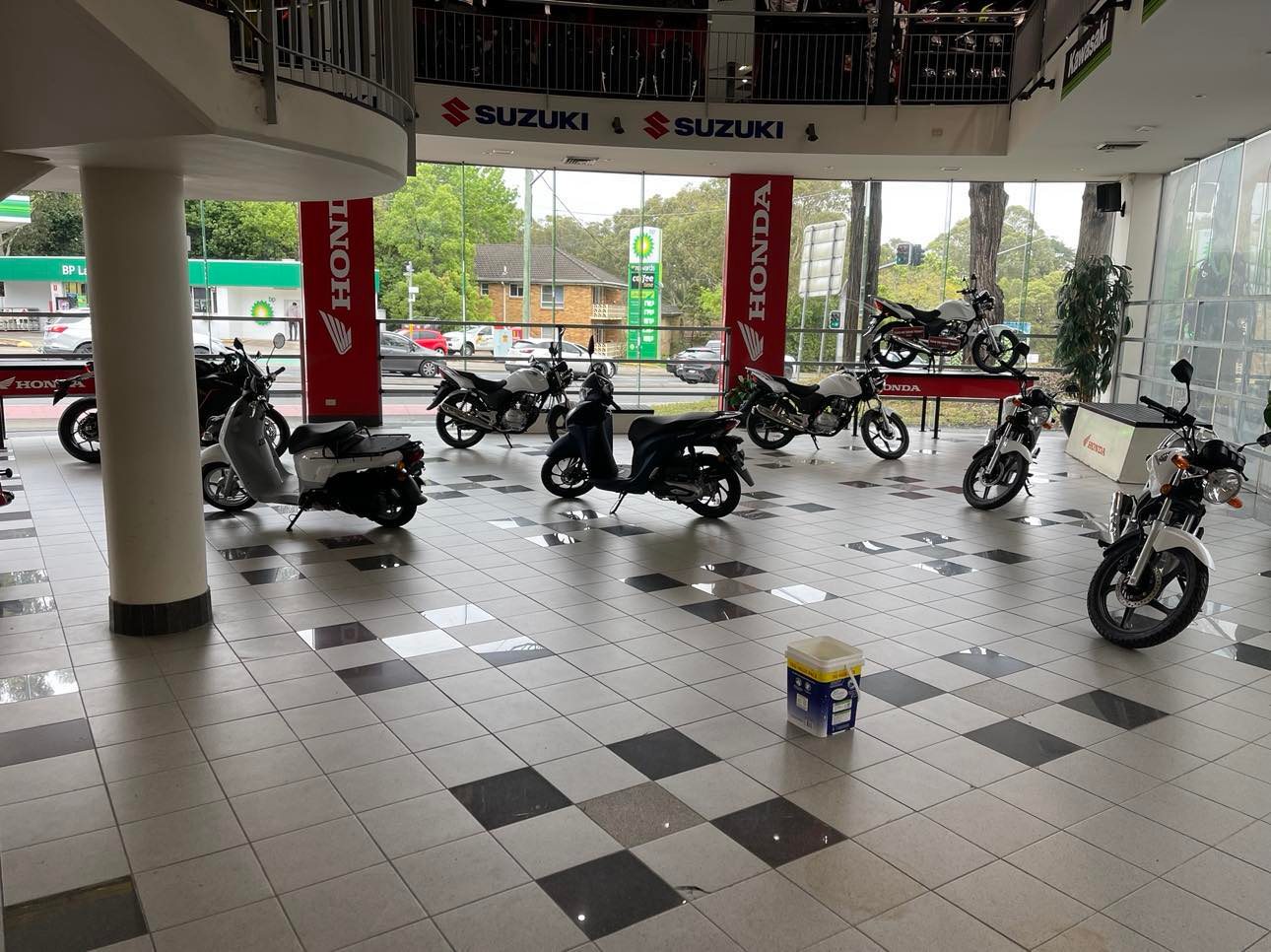Take from this what you will as it pertains to the general motorcycle environment currently. (picture very relevant)
I ride a motorcycle often and the other day I got a flat on the front. Not ideal.
Took my bike straight to my local sales and service centre Sydney City Motorcycles (not affiliated with vmoto as I'm aware) and was lucky enough to get a new tyre from the stock they hold in the workshop. The unanticipated $350 expense was a minor inconvenience to be able to ride safely the rest of my way home.
The kicker here is when I took a stroll downstairs to see what tantalising motorcycles I could potentially upgrade to in the coming years as my bike is "only" 655cc and would one day love a bigger 1L bike with a few more creature comforts.
This is what I saw:

That's 8x vehicles taking up showroom space that would hold 10x SUV's easily.
Worth noting that all of these are small bikes ranging between 125cc (the smallest modern capacity bikes) and 250cc (considered a step-up for a newbie or casual commuter). These bikes cost somewhere between $3,000 and $6,500.
Given that in early 2019 when I last purchased a motorcycle this exact store there were so many bikes that it felt like a hedge maze just to get from the door to the service desk, I was curious as to whether it was the standard microchip shortage of the entire automotive industry so I struck up a conversation with the sales manager.
Here are a few of the points slowing down motorcycle sales:
Yes, the chip shortage is a problem because these all have digital displays and a antitheft locking system and electronic fuel monitoring. Nothing flashy, but still needs a computer.
The manufacturers are obviously focusing production on higher margin bikes while their operations are restricted, so ironically they can't keep enough of the volume models that are used by first time riders and delivery people. It is also worth mentioning that a significant portion of motorcycle and scooter sales are to Learner and Provisional licence holders as a 2-day course and a visit to the RMS is all you need to be able to ride freely/unsupervised and a new bike is the fraction of the cost of a beaten up 5-owner Subaru.
The import/freight charges have tripled in the past 12 months but are supposedly rolling back marginally.
There has also been a huge influx of people committing to become delivery drivers since C19 came to our shores so a lot of the bikes they get that come in have already been sold.
Now the kicker: The Australian government is the first/only market to legislate changes to ABS on smaller bikes. I don't have the time right now to find articles that will point to how things were and how they are now but I can explain this anecdotally.
Some info here though
Previously, bikes under a certain class (by understanding is that this was 400cc) still had ABS (anti-lock braking system) but only required one disc on the front wheel. Some bikes still didn't require ABS in that ballpark and it was all pretty loosey goosey because obviously a lower powered and lighter bike doesn't need as much to stop it. In fact, stopping too quickly can cause problems.
This was one of the reasons I went for a "bigger" first bike. I wanted more grunt but better and safer stopping power.
What this means is that Australia is the only market in the world for which manufacturers will have to modify their mass-produced motorcycles and scooters to comply with new standards. In short, there will be 1-2 years while these factories ramp up to support a minority percentage of their sales. It is more likely that a third party brake company would get involved on-shore to do a conversion.
It also means that by adding ABS and potentially dual-disc front brakes these "cheap" and popular bikes will go up in price by $1,500 to $2,500 on some models. Not a stretch on a family SUV but on a bike that was under $5k that's almost a 50% increase on price.
Might have an impact on future motorcycle sales across the whole industry.



